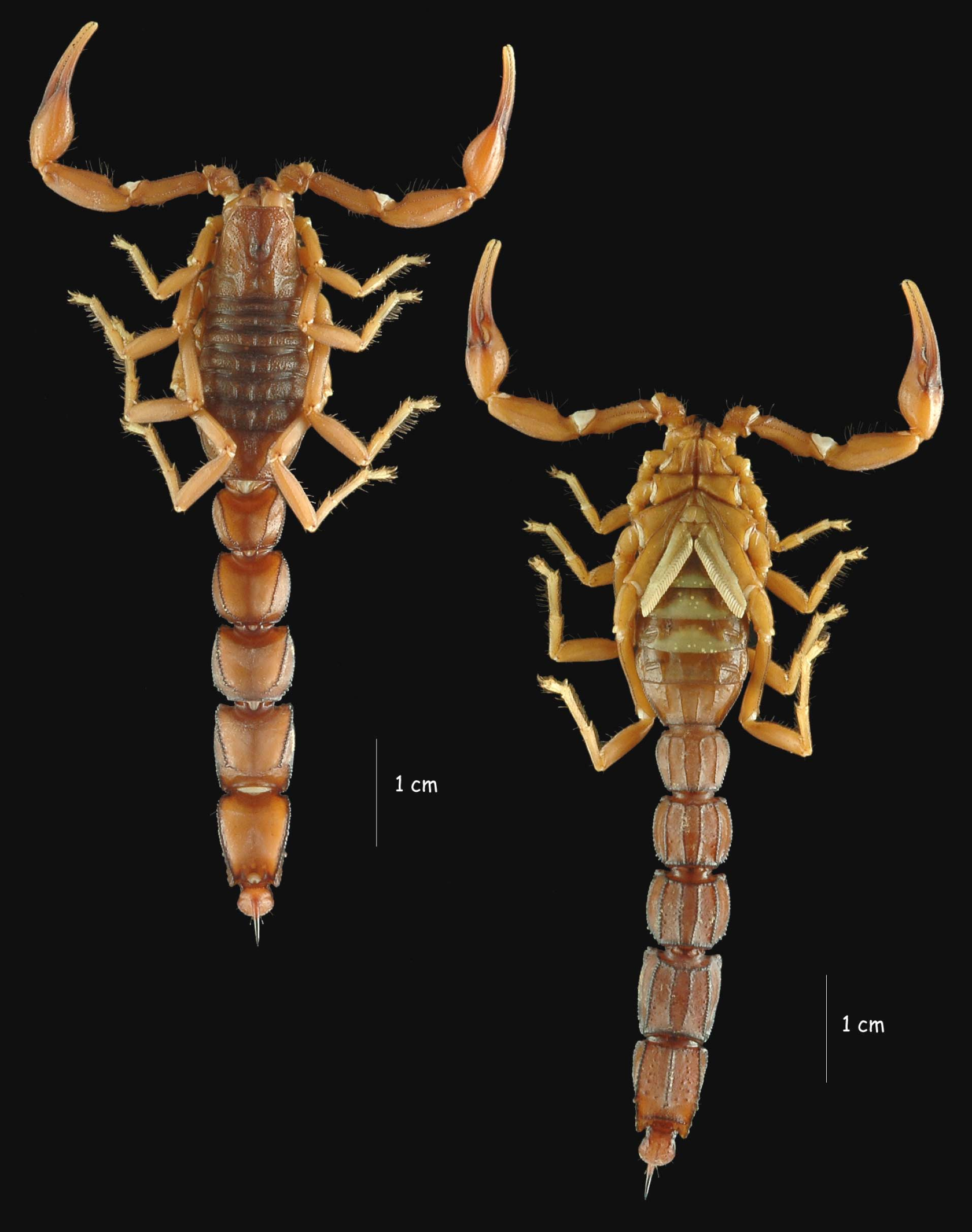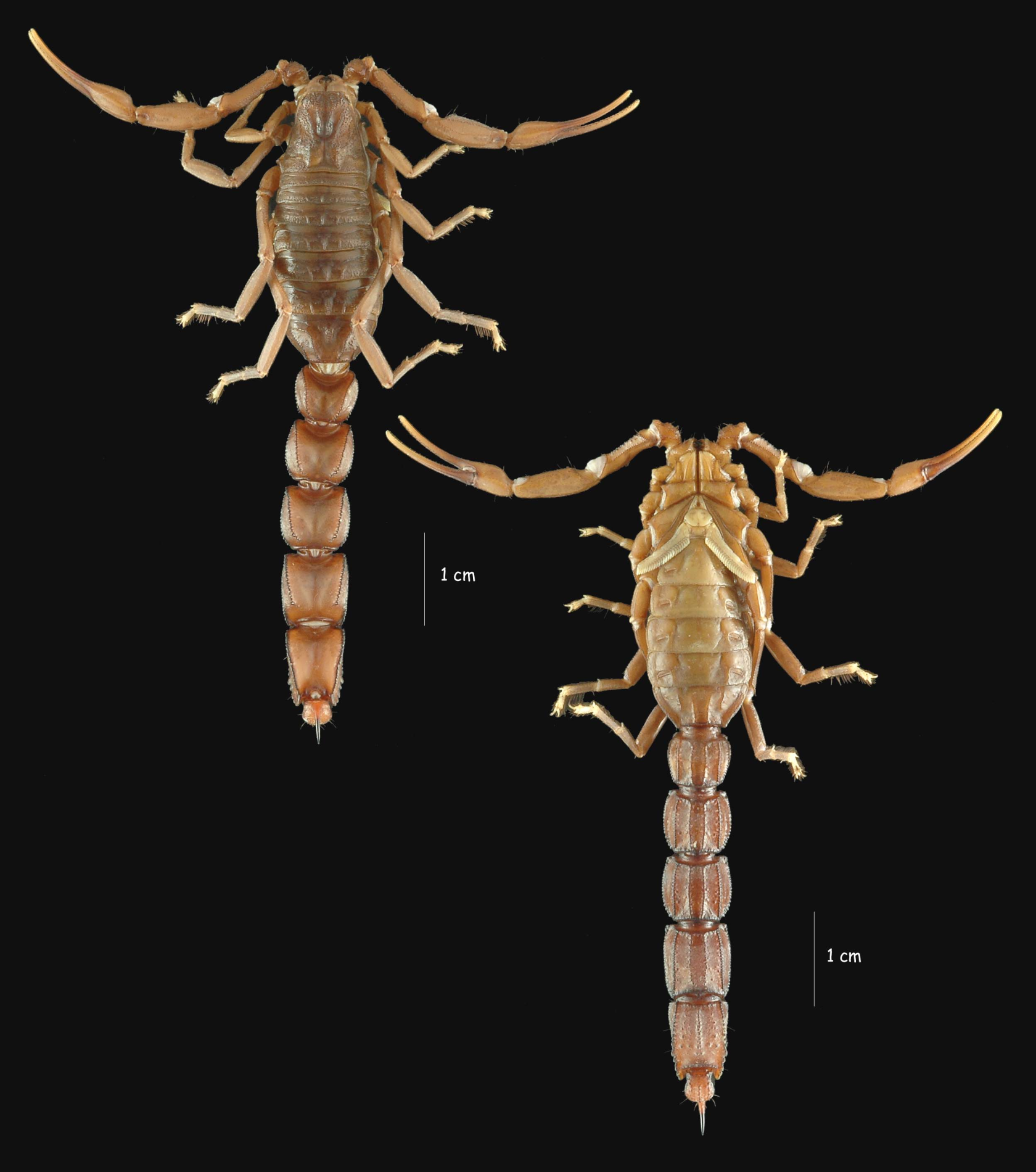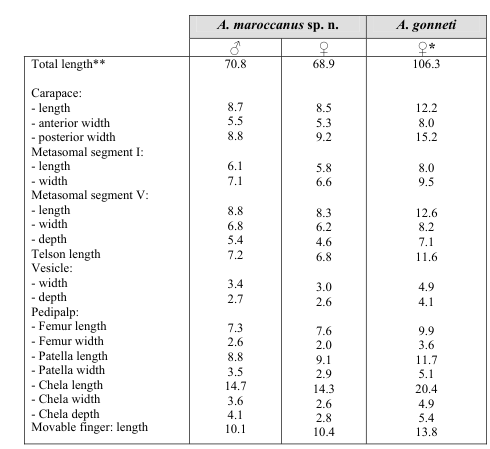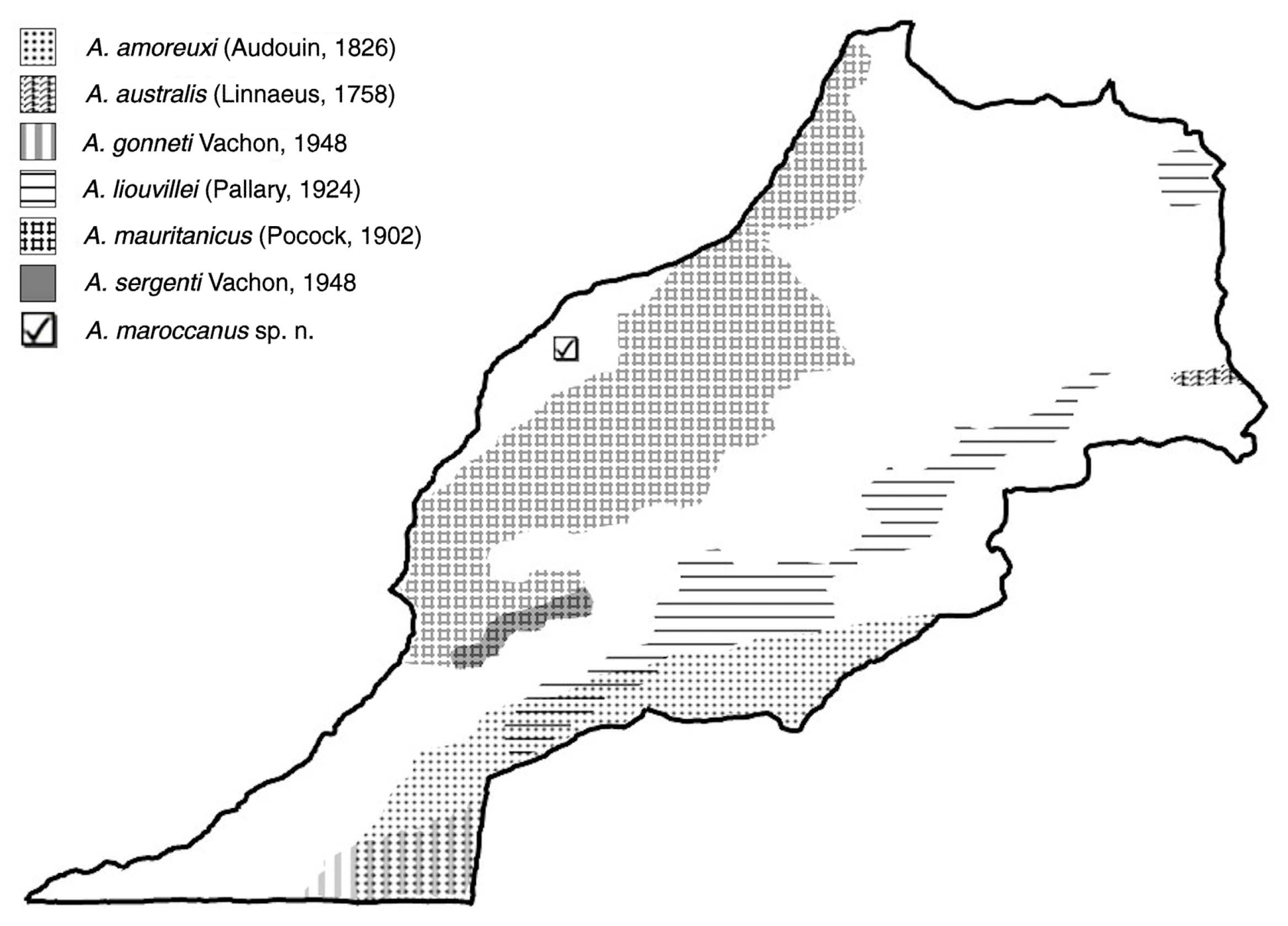Androctonus maroccanus (Lourenço, Ythier & Leguin, 2009)
A. maroccanus Lourenço, Ythier & Leguin, 2009*
 Figures 1–2: Androctonus maroccanus sp. n. Male holotype, dorsal and ventral aspects.
Figures 1–2: Androctonus maroccanus sp. n. Male holotype, dorsal and ventral aspects.
 Figures 3–4: Androctonus maroccanus sp. n. Female paratype, dorsal and ventral aspects.
Figures 3–4: Androctonus maroccanus sp. n. Female paratype, dorsal and ventral aspects.
Androctonus maroccanus sp. n. (Figs. 1–16)
Morocco, Atlantic Coast, Sidi Smaïl, September 2009
(F. Principaud leg.), 1 male holotype (MNHN-RS-8750),
1 female paratype (MNHN-RS-8751). Deposited in the
collections of the Muséum national d’Histoire naturelle,
Paris.
Etymology: The specific name refers to the country in
which the new species was found.
Diagnosis
A scorpion of medium to large size, reaching a total
length of 69–70 mm. General coloration yellow to
reddish-yellow, without spots; only metasomal carinae
are darker, almost blackish. Carinae and granulations on
carapace and tergites moderately developed. Metasomal
segments I to V only moderately enlarged distally; dor-
sal depression on segments I to IV moderately to
strongly marked. Anal arc with three rounded lobes.
Pedipalps with a conspicuous setation on femur and
patella; fixed and movable fingers with 13–14 (14–14)
rows of granules. Pectines with 26–27 teeth in the male,
25–23 in female.
Relationships
Androctonus maroccanus sp. n., can be disting-
uished from the other species of Androctonus, which are
also distributed in Morocco and Mauritania, and in
particular from Androctonus gonneti Vachon, 1948, by
the following characters: (i) its overall yellow to
reddish-yellow coloration; the other species are dark to
blackish; (ii) a smaller overall size, see Table I; (iii)
aculeus with the same length as vesicle; aculeus is
longer than vesicle in A. gonneti; (iv) presence of a
conspicuous setation on femur and patella of pedipalps;
setation absent on A. gonneti; (v) granulation on cara-
pace and tergites is better marked in males of the new
species.
Description based on male holotype and female
paratype (measurements in Table 1)
Reference:
Lourenco WR, Ythier E, Leguin E-A. A new species of Androctonus Ehrenberg, 1828 from Morocco (Scorpiones: Buthidae). Euscorpius. 2009(89):1-8. [Free fulltext]


 Figure 16: Map of Morocco showing the known distribution of Androctonus species in the country and the type locality of A.
Figure 16: Map of Morocco showing the known distribution of Androctonus species in the country and the type locality of A.
No Comments